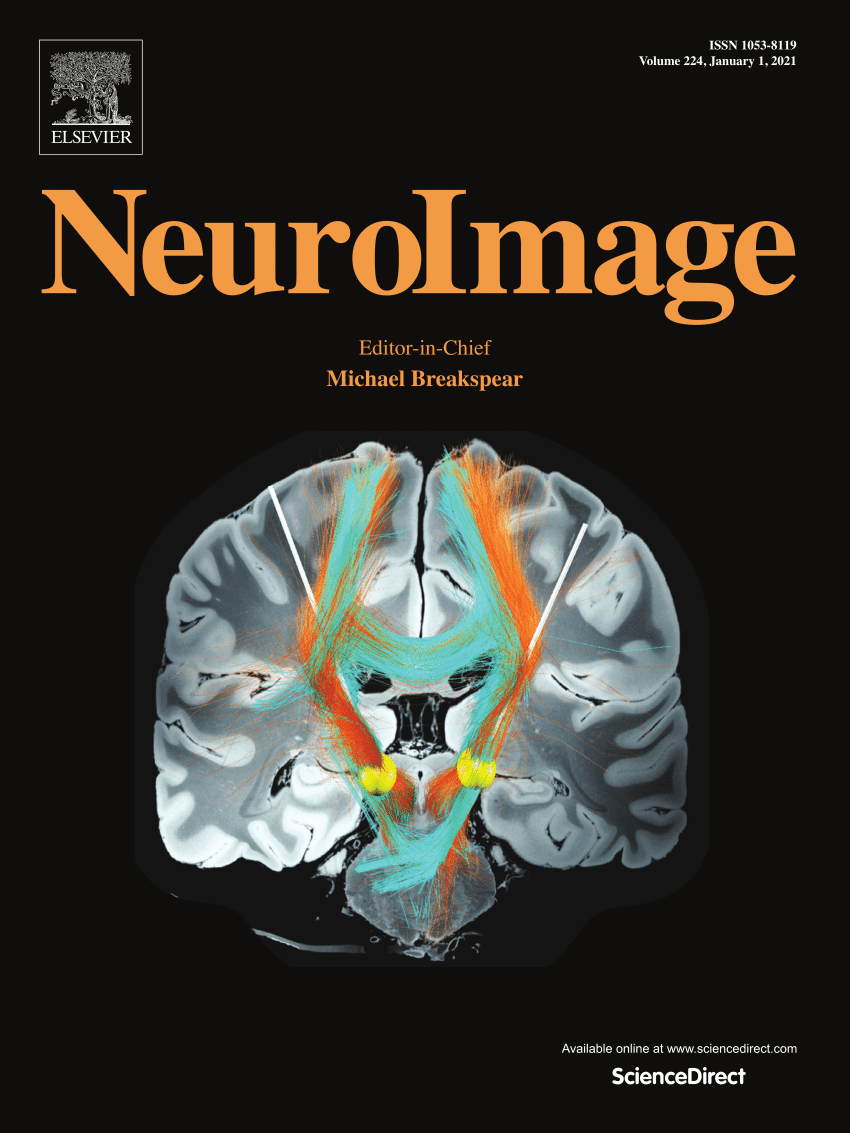静息状态脑熵(BEN)、卵巢激素与行为抑制与激活系统的关系
IF 4.7
2区 医学
Q1 NEUROIMAGING
引用次数: 0
摘要
脑熵(BEN)量化大脑活动的不规则性、无序性和不确定性。最近的研究表明,静息状态功能磁共振成像(rs-fMRI)衍生的BEN与认知、任务激活、神经调节和药物干预有关。然而,BEN是否能反映激素波动的影响尚不清楚。此外,根据行为抑制和激活系统(BIS/BAS)的测量,卵巢激素可以调节行为特征,如抑制控制和冲动。在这项研究中,我们研究了卵巢激素对年轻成年女性BEN和BIS/BAS的影响。44名参与者(平均年龄22.61±2.14岁)来自OpenNeuro。扫描前采集卵巢激素包括雌二醇(E2)、孕酮(PROG)和BIS/BAS。从预处理后的rs-fMRI图像计算体素BEN图。采用Pearson相关分析和中介分析评估BEN与卵巢激素以及BIS/BAS之间的关系。我们的研究结果显示BEN和PROG在包括背外侧前额叶皮层(DLPFC)和后顶叶皮层(PPC)在内的额顶叶网络(FPN)以及包括杏仁核、海马和海马旁皮层的边缘网络中呈负相关。相比之下,BEN与左侧DLPFC BAS-驱动子量表测量的冲动性特征呈正相关。此外,PROG与BAS-drive测量的冲动性特征呈负相关。中介分析结果表明,通过bas驱动测量,PROG通过降低左DLPFC的BEN并随后增加该区域的功能连接(FC)来降低冲动性。这些发现为BEN反映PROG对大脑功能和行为的影响提供了第一个证据。此外,他们还阐明了PROG调节冲动性特征的神经机制:PROG增强左DLPFC神经活动的时间相干性(减少熵),从而在静息状态下增加该区域的时间同步性(增加FC),进而增强执行控制功能,从而负向调节冲动性。这些发现为我们理解卵巢激素对女性大脑和行为的影响提供了新的见解。本文章由计算机程序翻译,如有差异,请以英文原文为准。
The relationships of resting-state brain entropy (BEN), ovarian hormones and behavioral inhibition and activation systems (BIS/BAS)
Brain entropy (BEN) quantifies irregularity, disorder and uncertainty of brain activity. Recent studies have linked BEN, derived from resting-state functional magnetic resonance imaging (rs-fMRI), to cognition, task activation, neuromodulation, and pharmacological interventions. However, it remains unknown whether BEN can reflect the effects of hormonal fluctuations. Furthermore, ovarian hormones are known to modulate behavioral traits, such as inhibitory control and impulsivity, as measured by the Behavioral Inhibition and Activation Systems (BIS/BAS). In this study, we investigated how ovarian hormones influence BEN and BIS/BAS in young adult women.
The forty-four participants (mean age = 22.61 ± 2.14 years) were obtained from OpenNeuro in the study. Ovarian hormones including estradiol (E2), progesterone (PROG) and BIS/BAS were acquired before scanning. The voxel-wise BEN maps were calculated from the preprocessed rs-fMRI images. Pearson’s correlation and mediation analyses were used to assess the relationships between BEN and ovarian hormones as well as BIS/BAS.
Our results revealed a negative correlation between BEN and PROG in frontoparietal network (FPN), including the dorsolateral prefrontal cortex (DLPFC) and posterior parietal cortex (PPC), as well as in the limbic network, encompassing the amygdala, hippocampus, and parahippocampal cortex. In contrast, BEN showed a positive correlation with impulsivity traits measured by the BAS-drive subscale of BAS in the left DLPFC. Additionally, PROG was negatively correlated with impulsivity traits measured by BAS-drive. Results from mediation analysis demonstrated that PROG reduces impulsivity, as measured by BAS-drive, by decreasing BEN in the left DLPFC and subsequently increasing functional connectivity (FC) within this region.
These findings provide the first evidence that BEN reflects the influence of PROG on brain function and behavior. Furthermore, they elucidate the neural mechanisms through which PROG modulates impulsivity traits measured by BAS-drive: PROG enhances the temporal coherence (decreased entropy) of neural activity in the left DLPFC, which in turn increases temporal synchronization (increased FC) within this region during resting-state, and then enhances executive control functions, thereby negatively regulating impulsivity. These findings provide new insights into our understanding of the effects of ovarian hormones on the brain and behavior in women.
求助全文
通过发布文献求助,成功后即可免费获取论文全文。
去求助
来源期刊

NeuroImage
医学-核医学
CiteScore
11.30
自引率
10.50%
发文量
809
审稿时长
63 days
期刊介绍:
NeuroImage, a Journal of Brain Function provides a vehicle for communicating important advances in acquiring, analyzing, and modelling neuroimaging data and in applying these techniques to the study of structure-function and brain-behavior relationships. Though the emphasis is on the macroscopic level of human brain organization, meso-and microscopic neuroimaging across all species will be considered if informative for understanding the aforementioned relationships.
 求助内容:
求助内容: 应助结果提醒方式:
应助结果提醒方式:


